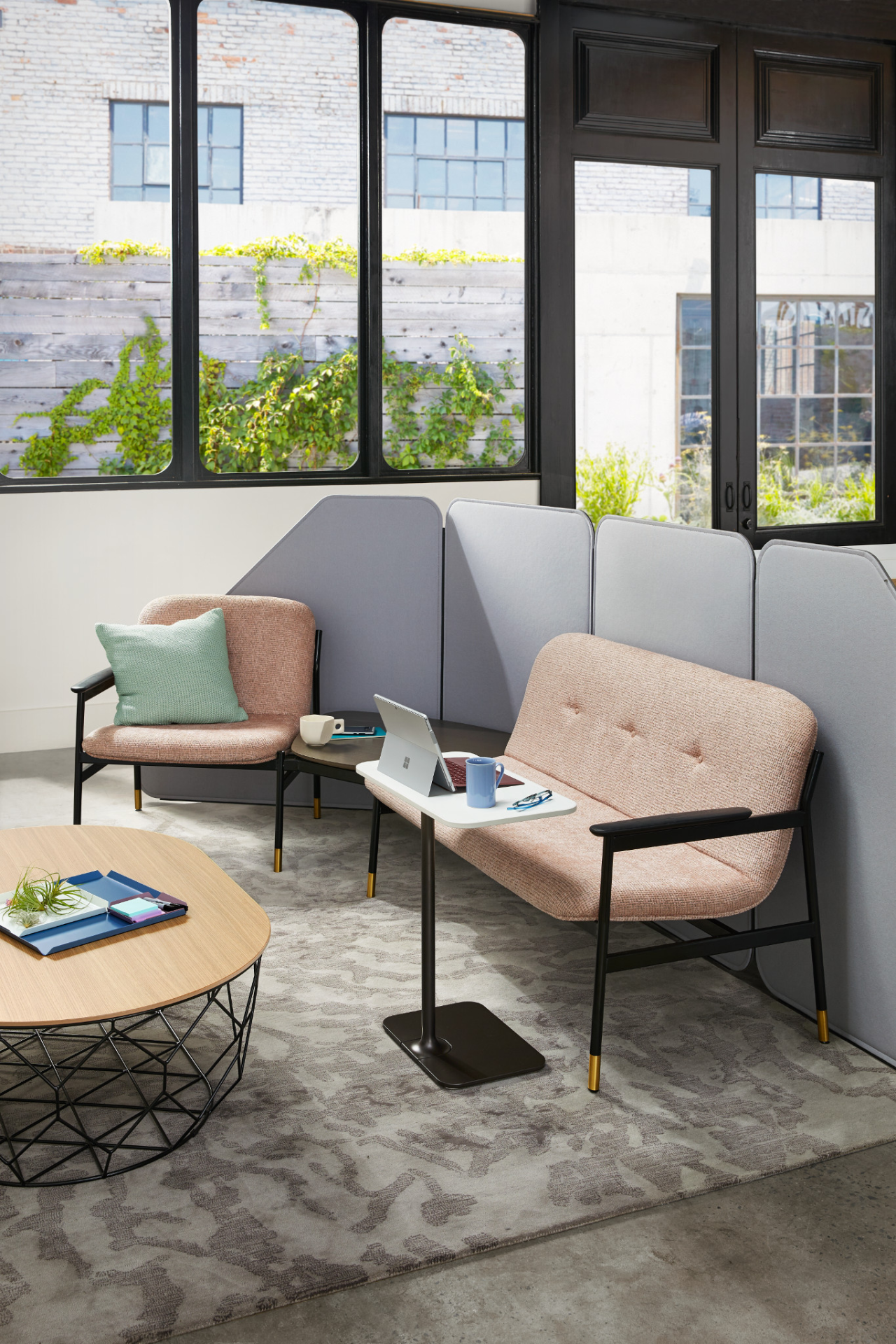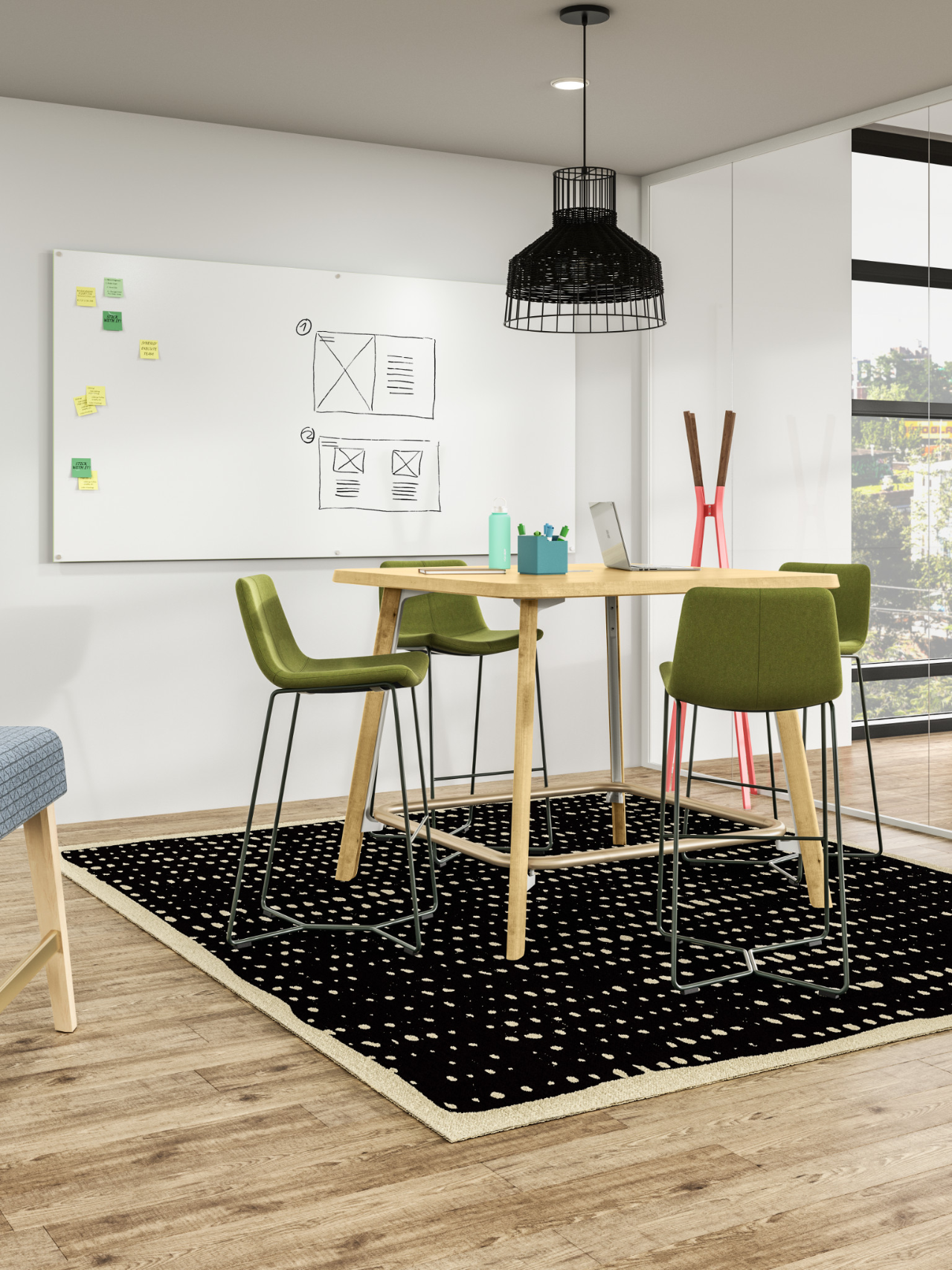We use cookies to maximize your online experience with us. By closing this window, you consent to our cookie policy. You can change your cookie settings in your browser any time. For more information, please see our Privacy Policy located on the footer of this site.
Ancillary is the New Primary

Visit any state-of-the-art workplace and you’ll probably notice right away that it looks different from its predecessors; ancillary furniture fills a variety of casual and comfortable spaces that people want to work in.
Whether it’s a healthcare facility, school, or corporate office, today’s organizations require a diverse mix of spaces – large meeting areas, collaboration spaces, small group huddle rooms, individual focus spaces, cafes and lounges, not to mention a balance of open and enclosed offices. Classrooms, examination or recovery rooms, waiting rooms and lobbies, as well as other specialized spaces are often in the mix as well. Each space has its own function and purpose, and the people using each space have unique personalities and ways of working. Cookie-cutter design solutions are no longer effective. As Jeff Stovall, our VP of Sales in DC suggests, “clients want a variety of ancillary solutions, not a standard set.” Steelcase Marketplace makes it easy for design professionals to create and collaborate with ease.
 COMPLEXITY DRIVES CONSOLIDATION
COMPLEXITY DRIVES CONSOLIDATION
By definition, ancillary refers to something that’s been added to support or enhance an organization’s primary activities, but Jeff continues: “ancillary is the new primary.” Clients want and need such a diverse mix of spaces and furnishings in their workplace, that each design project is now likely to involve 20-30 different furniture manufacturers. This volume no doubt adds complexity to projects, but it also “helps us add value because we can consolidate and streamline services,” according to Nathan Kooi, Vice President and General Manager of the Mid-Atlantic Region.
Many furniture manufacturers are similarly expanding their product lines and entering into new and unique partnerships to help streamline the process for clients as well as their design teams. Steelcase and West Elm, for example, joined forces to address the resimercial design trend and to provide furnishings that look and feel like home, but that withstand the wear and tear of an active and innovative workplace. Blu Dot is another Steelcase partner that offers a new aesthetic for commercial spaces.
“The ancillary market addresses more diverse client needs and the reality that a variety of furniture is now required for each project. For example, offices need flexible desks and chairs that allow sit-stand and other postures,” explains our Design Director, Darlene Burns. “Workspaces have become more task-oriented in the sense that we seek different spaces to accomplish different tasks from individual focus work to group collaboration and client meetings. Furniture and accessories must be designed to support those tasks. Partnerships like West Elm and Blu Dot offer solutions that make the workplace more comfortable and engaging, as well as productive.” PRIORITIZING CULTURE + FLEXIBILITY
PRIORITIZING CULTURE + FLEXIBILITY
Much of the ancillary market’s growth can be attributed to the fact that most organizations now employ members of several different generations. While older workers may have grown up with private offices or cubicles where they both worked on their own and hosted meetings (often spending their full workdays in one spot), younger workers who are accustomed to greater mobility and flexibility – not to mention constant connectivity with technology – desire a different kind of workplace.
Millennials identify pay, culture, and flexibility as their top three priorities when considering an employer. 69% go on to suggest that diversity and inclusion are important keys to keeping them happy… and keeping them around.
In their 2018 Millennial Survey, Deloitte reported that millennials identify pay, culture, and flexibility as their top three priorities when considering an employer. Sixty-nine percent go on to suggest that diversity and inclusion are important keys to keeping them happy… and keeping them around. When an organization can demonstrate its commitment to openness with spaces that are designed to support and engage employees of every demographic, and at all levels, the connection goes way deeper than a set of policies that might otherwise just be reported in HR handbooks or recruiting brochures. As the saying goes, actions speak louder than words.
 THE ADDED-VALUE EQUATION
THE ADDED-VALUE EQUATION
Demographic shifts also lead to behavioral changes such as researching and buying products online, which is becoming more commonplace as millennials and other digital natives rise to decision-making roles within their organizations. The ancillary market has always been a key source of this kind of direct buying. The truth is, anyone can walk into a West Elm store or go online to order a desk or chair or sofa. Kurt Weiss, Vice President of Sales, GSA, notes, “customers are more educated from a product and price perspective, and certainly can buy many commercial products on their own, but we add value through our diverse portfolio of solutions and help our clients ensure the products they’re purchasing will truly contribute to their organization’s success in both the short- and long-term.”
As projects become more complex and diverse, the end results become more rewarding. The focus on the ancillary market simply reinforces the fact that design has become more personal. There’s no one-size-fits-all solution, nor should there be. Thanks to ancillary providers and new and exciting partnerships, we now have access to the resources that help us ensure every client’s space reflects their mission, brand, culture, and most importantly, their people.
Have questions about which ancillary solutions will work best for you? Contact us – our team can help curate solutions to best support your goals.
VIEW OUR IMAGE GALLERY











